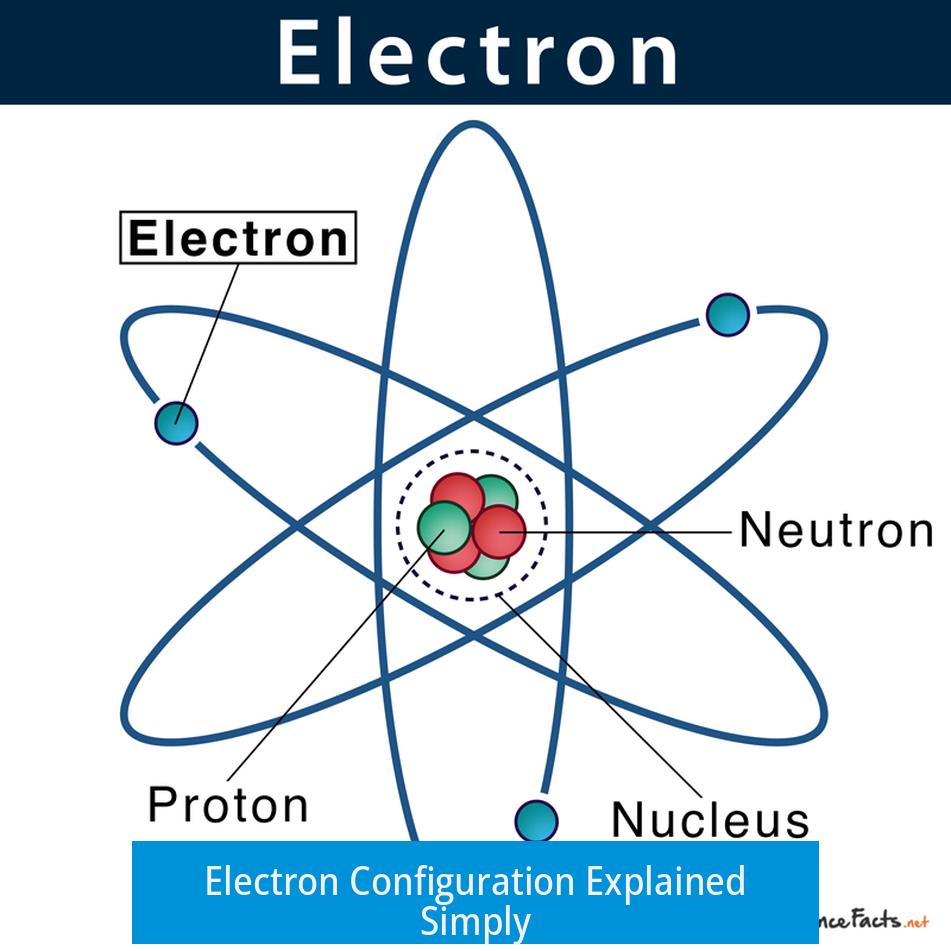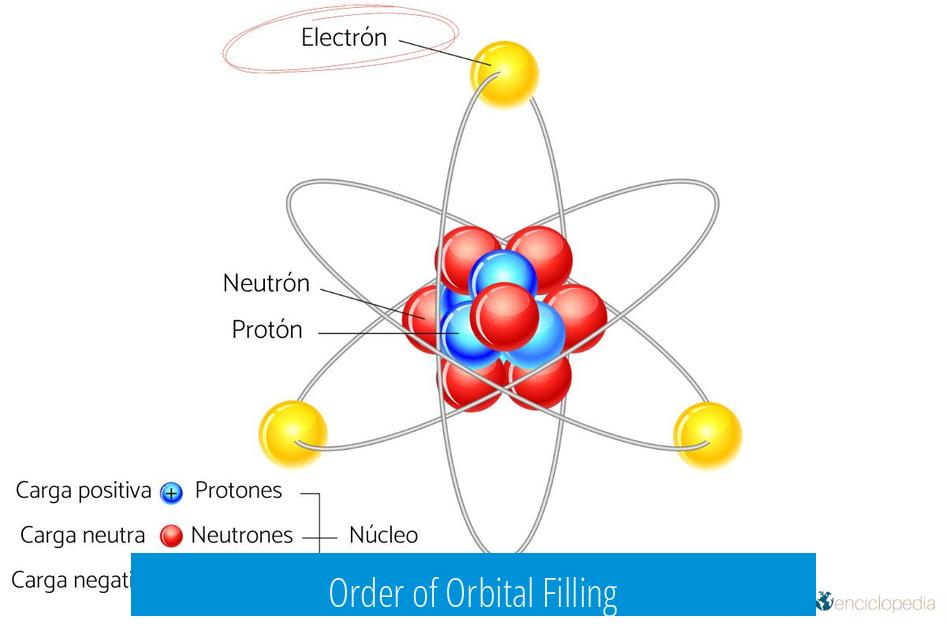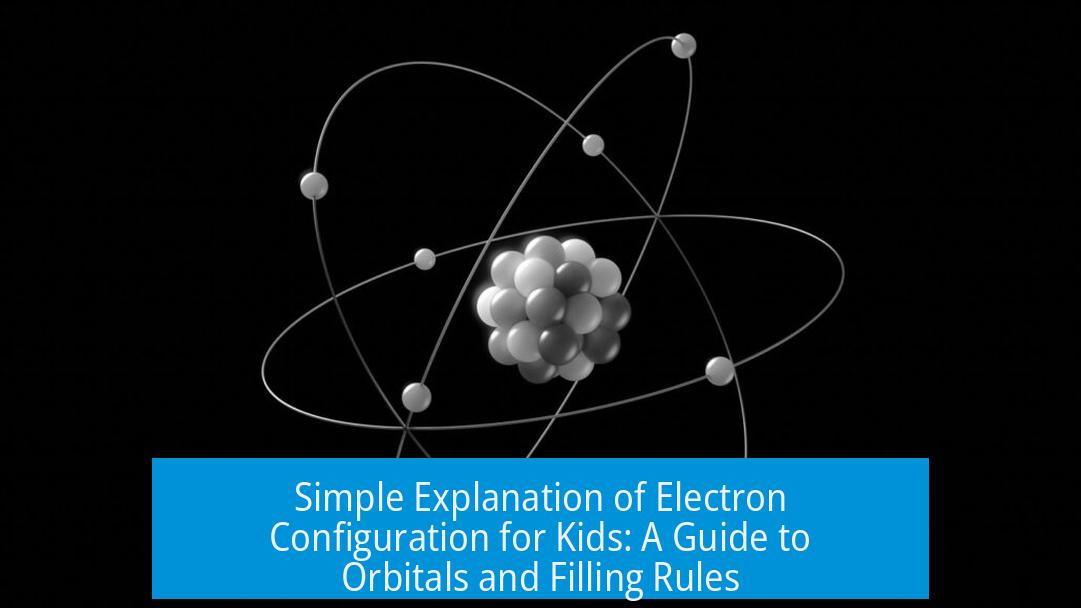Electron Configuration Explained Simply

Electron configuration is the way electrons arrange themselves around an atom’s nucleus, filling specific spaces called orbitals in a set order based on energy levels. This pattern follows clear rules and helps us understand how atoms behave chemically. The electrons don’t just scatter randomly; they fill orbitals step by step in a precise way.
What Are Orbitals?
Electrons live in orbitals, which are regions where electrons are most likely found. Imagine orbitals as shapes like spheres, dumbbells, and clovers. These shapes describe the wave-like nature of electrons around an atom.
- S orbitals: shaped like spheres (1 orbital)
- P orbitals: shaped like dumbbells (3 orbitals)
- D orbitals: shaped like clovers (5 orbitals)
- F orbitals: more complex shapes (7 orbitals)
Each orbital can hold electrons, but only a certain number. The shape and number of orbitals influence how many electrons fit around the nucleus.
How Many Electrons Fit Into Each Orbital Type?
| Orbital Type | Number of Orbitals | Max Electrons per Orbital | Total Electrons per Orbital Type |
|---|---|---|---|
| S | 1 | 2 | 2 |
| P | 3 | 2 | 6 |
| D | 5 | 2 | 10 |
| F | 7 | 2 | 14 |
Electrons have a property called spin, which means each orbital holds two electrons with opposite spins. This is why each orbital holds two electrons only.
Rules for Filling Electron Orbitals
Electrons fill orbitals following three main rules:
- Aufbau Principle: Electrons fill from the lowest energy orbital to higher ones.
- Pauli Exclusion Principle: Only two electrons can occupy the same orbital, and they must have opposite spins.
- Hund’s Rule: Electrons fill all orbitals of the same energy singly before pairing up.
The total number of electrons equals the atomic number of the atom. For a neutral atom, this is the number of protons and electrons.
Order of Orbital Filling

Electrons fill orbitals in this typical sequence: 1s → 2s → 2p → 3s → 3p → 4s → 3d → 4p → 5s → 4d and so on.
Notice that the 4s orbital fills before the 3d. This prioritization depends on orbital energy levels.
Example: Electron Configuration of Gallium (Ga)
Gallium has 31 electrons (atomic number 31). Electrons fill orbitals like this:
- 1s2 → 2 electrons in the 1s orbital
- 2s2 → 2 electrons in 2s
- 2p6 → 6 electrons in 2p
- 3s2 → 2 electrons in 3s
- 3p6 → 6 electrons in 3p
- 4s2 → 2 electrons in 4s
- 3d10 → 10 electrons in 3d
- 4p1 → 1 electron in 4p
Its full configuration is 1s2 2s2 2p6 3s2 3p6 4s2 3d10 4p1. This shows how electrons fill lower energy orbitals before moving to higher ones. The 3d block sits between 4s and 4p orbitals, filling after 4s but before 4p.
Why Two Electrons per Orbital?
The Pauli exclusion principle states no two electrons can be exactly alike in an atom. Electrons have spin, which can be either “up” or “down.” This means each orbital can hold at most two electrons with opposite spins.
This rule limits how electrons arrange in orbitals and protects the atom’s stability.
Quantum Numbers and Orbital Shapes
Each electron can be described by quantum numbers. The principal quantum number (n) tells the main energy level. For example:
- n=1 has only an s orbital
- n=2 has s and p orbitals
- n=3 adds d orbitals
- n=4 includes f orbitals
Electrons fill orbitals starting from lower n values, moving to higher ones. The shape (s, p, d, f) also affects the energy level and filling order.
Key Takeaways
- Electron configuration shows how electrons arrange in orbitals around the nucleus.
- Orbitals come in shapes (s, p, d, f) and hold a specific number of electrons.
- Electrons fill orbitals from lowest to highest energy, following the Aufbau, Pauli, and Hund’s rules.
- Each orbital can hold only two electrons with opposite spins.
- Examples like Gallium illustrate the stepwise filling of orbitals.
What does electron configuration mean in simple words?
Electron configuration is how electrons are arranged in an atom. Electrons fill different spaces called orbitals in a specific order. This tells us where electrons live inside atoms.
How do electrons fill the orbitals?
Electrons fill orbitals starting with the lowest energy ones. The order goes like 1s, then 2s, then 2p, and so on. Each orbital type holds a set number of electrons first, like 2 in s and 6 in p orbitals.
Why can only two electrons fit in one orbital?
Each orbital can hold two electrons because electrons have spin, a kind of twist. These spins let two electrons share the same space but spin in opposite ways, so they don’t clash.
What are the rules for arranging electrons?
Three main rules guide electron arrangement: The Aufbau principle says fill from lowest to highest energy. The Pauli exclusion says no two electrons are exactly the same. Hund’s rule says fill each orbital singly before pairing.
Are there exceptions to the electron filling order?
Yes, some atoms like copper and chromium don’t follow the normal order perfectly. Their electrons shift to make the arrangement more stable but this happens mainly in specific elements.





Leave a Comment